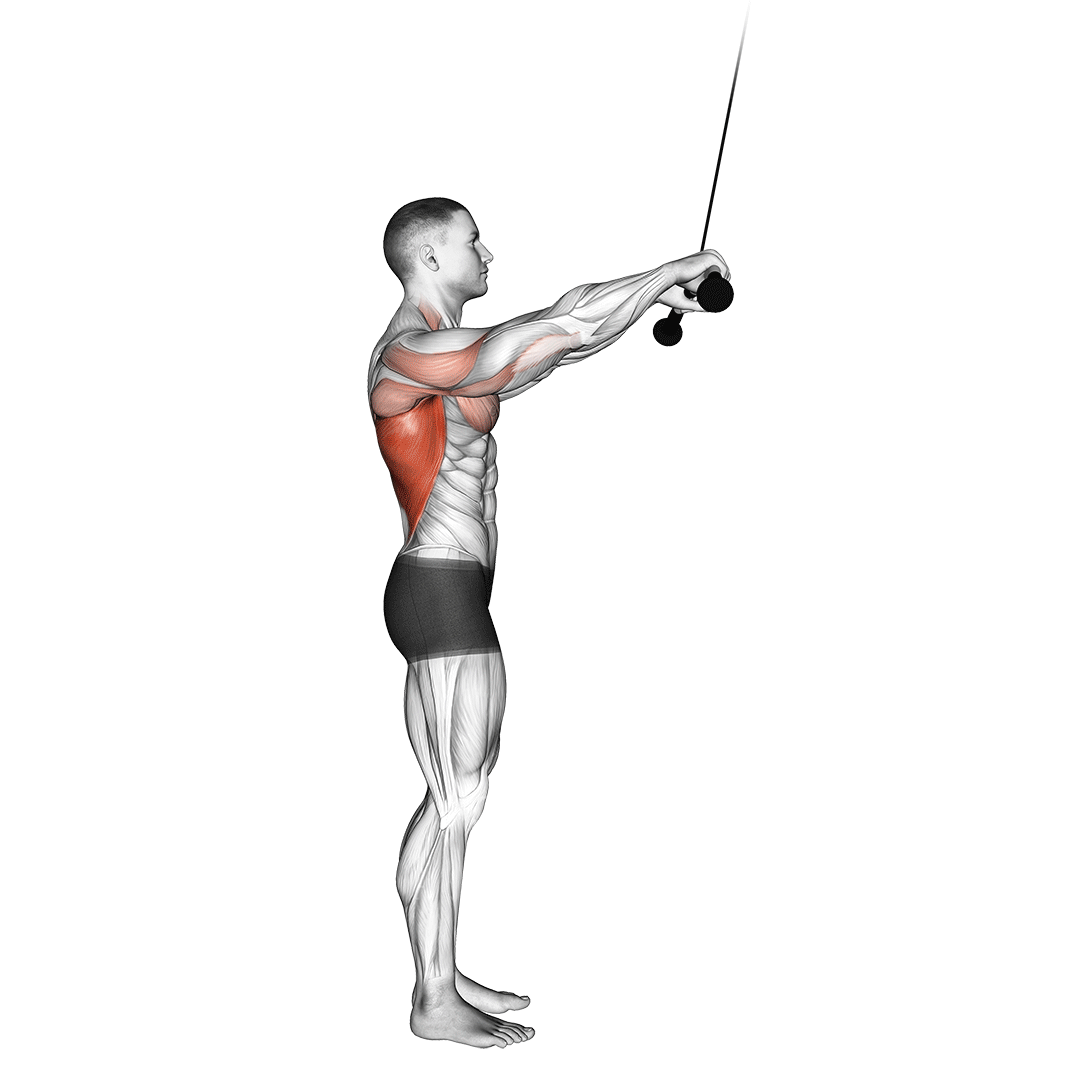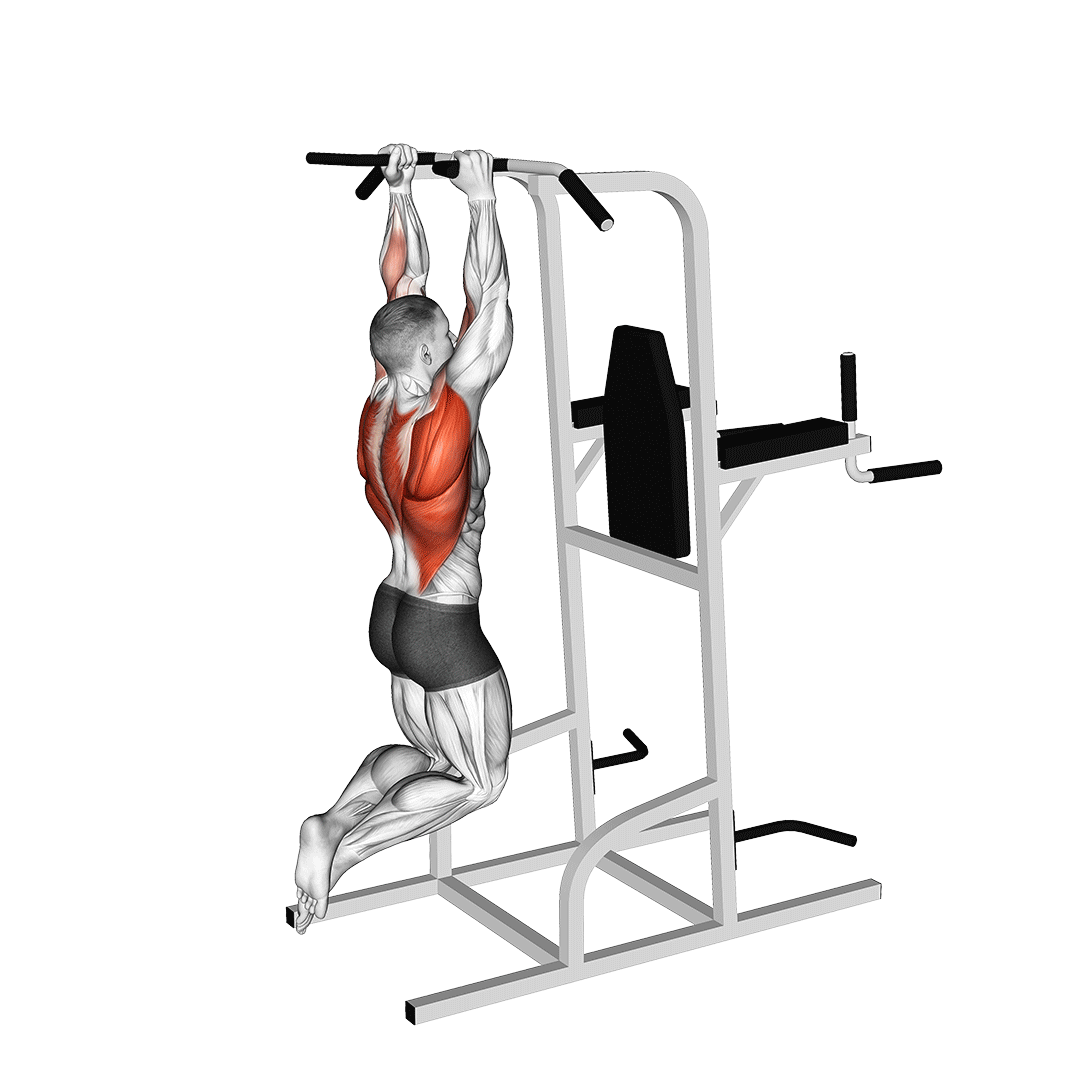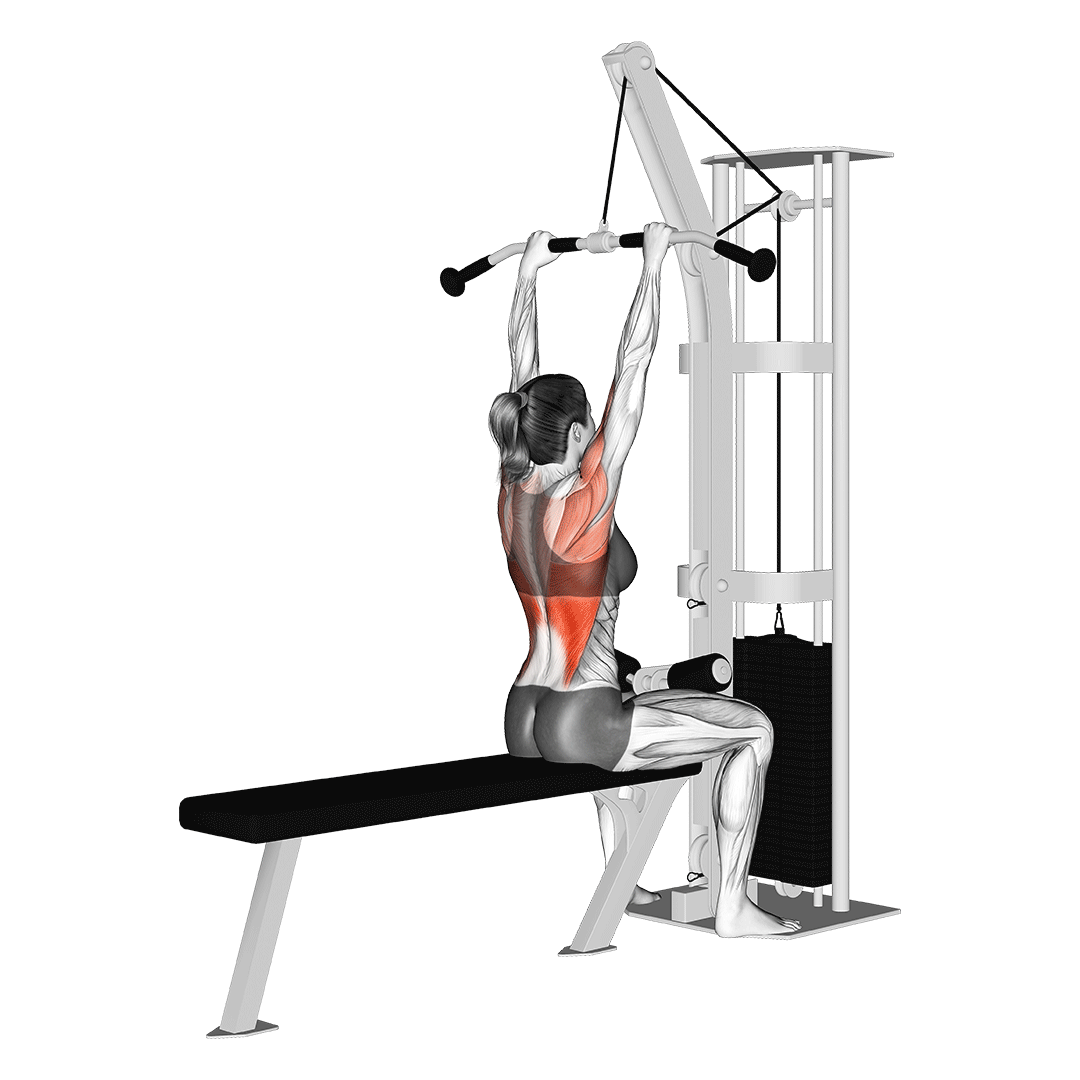What are the Benefits of Doing Straight Arm Lat Pulldowns?
Straight arm pulldowns are most often chosen over the conventional variation of lat pulldown for its greater emphasis on the back muscles.
Apart from such a benefit, performing the exercise upright and standing allows for a wider range of motion, translating to greater time under tension and overall better results.
Benefits of Standing Straight Arm Pulldowns
Excellent for Building Upper Back Muscle Mass, Power and Strength
Like most other types of pulldown, the straight arm lat pulldown excels at building mass, strength and power output throughout the muscles of the back.

Although the lats receive the most benefit from the standing straight arm version, the other mover muscles will also develop along similar lines as well.
To get the most muscular benefit out of straight arm pulldowns, ensure that the elbows bend as little as possible, and that a full range of motion is achieved with each repetition. Avoid excessive swinging or half-reps.
Develops Significant Vertical Pulling Strength
The latissimus dorsi and trapezius muscles are absolutely vital for pulling force along a vertical axis.
Climbing rope, performing pull-ups and even deadlifts (to some small extent) require powerful vertical pulling to achieve correctly - strength that is developed quite effectively with the use of straight arm pulldowns.

While not necessarily as effective at building vertical pulling strength as free weight movements like the barbell upright row or weighted pull-up, the straight arm pulldown can nonetheless be used as an effective secondary movement alongside these exercises.
Reduced Elbow Flexor Involvement
One major limiting factor to conventional lat pulldowns is fatigue and weakness in the elbow flexor muscles - particularly the biceps brachii, which play a secondary role in most bent-arm pulling movements.

Fortunately, with the elbows straightened, the biceps brachii and other nearby elbow flexor muscles are involved to a far less significant degree. This allows the latissimus dorsi to be focused on and trained to the point of failure without being limited by the weaker and smaller muscle groups of the arms.
Easily Adjustable for Lifter Comfort
As a benefit of most machine-based exercises, lifters who find a certain aspect of their straight arm lat pulldown uncomfortable can easily adjust it to better suit their needs.
If their grip width or orientation is limiting their performance, the use of different handle attachments is as simple as swapping one for the other.
Likewise, those who wish for a more diagonal or horizontal angle of resistance can simply adjust the pulley height to achieve their ideal angle.
Large Range of Motion and Consistent Level of Tension
Because the movement is performed in a standing position with the torso relatively out of the way of the handle, the straight arm standing variant features the largest range of motion among all other pulldown variations.
This advantage meshes perfectly with the constant level of tension provided by all forms of resistance training machine, where the resistance remains consistent regardless of what portion of the exercise is being performed.
As mentioned previously, a larger range of motion equates to a greater time under tension and the muscles remaining in a developmentally-advantageous stretched position.
In short, a larger range of motion under constant tension equates to greater muscular development.
References
1. Andersen V, Fimland MS, Wiik E, Skoglund A, Saeterbakken AH. Effects of grip width on muscle strength and activation in the lat pull-down. J Strength Cond Res. 2014 Apr;28(4):1135-42. doi: 10.1097/JSC.0000000000000232. PMID: 24662157.
2. Snyder BJ, Leech JR. Voluntary increase in latissimus dorsi muscle activity during the lat pull-down following expert instruction. J Strength Cond Res. 2009 Nov;23(8):2204-9. doi: 10.1519/JSC.0b013e3181bb7213. PMID: 19826307.
